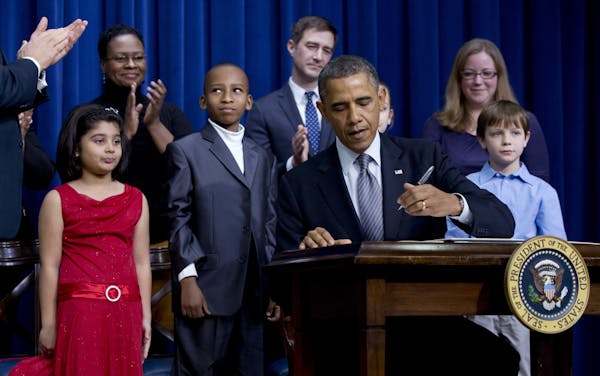Everyone knows the terrible litany of gun violence: Columbine High School, Virginia Tech, Fort Hood, Tucson, the Cinemark movie theater in Colorado, the Sikh temple in Wisconsin, Sandy Hook Elementary School.
Here are some examples you may not have heard about: Pearl High School in Mississippi; Sullivan Central High School in Tennessee; Appalachian School of Law in Virginia; a middle-school dance in Edinboro, Pa.; Players Bar and Grill in Nevada; a Shoney's restaurant in Alabama; Trolley Square Mall in Salt Lake City; New Life Church in Colorado; Clackamas Mall in Oregon (three days before Sandy Hook), and Mayan Palace Theater in San Antonio (three days after Sandy Hook).
There's a reason that you never heard much about the places on the second list. The number of innocent people killed was much smaller -- sometimes, none. In each of them, the "active shooter" or potential shooter was confronted by an armed defender who happened to be at the scene when the attack commenced; the bad guy wasn't able to just keep going about his deadly business, as at Sandy Hook.
Sometimes the hero was an armed school guard (Sullivan Central High). Sometimes it was an off-duty police officer or mall security guard (Trolley Square; Mayan Theater; Clackamas Mall; and the Appalachian Law School, where two law students, one of them a police officer and the other a former sheriff's deputy, had guns in their cars). Or a restaurant owner (Edinboro). Or a church volunteer guard with a concealed-carry permit (Colorado). Or a diner with a concealed-carry permit (Alabama and Nevada). At Pearl High School, it was the vice principal who had a gun in his car and stopped a 16-year-old, who had killed his mother and two students, before he could drive away, perhaps headed for the junior high.
The experience of armed resistance shows the value of NRA Executive Vice President Wayne LaPierre's call for armed security guards in every school. It was perhaps not a coincidence that in calling for school guards, LaPierre was endorsing an idea that has a higher level of public support, in post-Newtown polls, than any other proposed solution to school violence.
And LaPierre was really just suggesting an expanded version of President Clinton's 1999 proposal for federal grants for school safety officers. U.S. Sen. Barbara Boxer, an ardent and effective advocate of gun control, has called for deploying the National Guard to protect schools. (Boxer, notwithstanding her perfect record of voting against everything the NRA is for, recognizes the importance of armed defense of high-value targets. She teamed with Sen. Mitch McConnell in 2003 to strengthen the armed-pilots law.)
However, the Clinton plan, and the NRA's, is too timid. What we need is "more good guys with guns," and right now. In some communities, police are already stretched too thin to provide even one officer per school. Hiring and training more police would take half a year or more. LaPierre has urged the use of retired officers, but not every community may have enough volunteers.
For schools, Utah provides a model. In Utah, if a law-abiding adult passes a fingerprint-based check and a safety training class, then he or she is issued a permit to carry a concealed handgun throughout the state. Thus, teachers may carry at school. Several Texas school districts also encourage armed teachers.
Antigun ideologues invent all sorts of fantasy scenarios about the harms that could be caused by armed teachers. But the Utah law has been in effect since 1995, and Texas' since 2008, with not a single problem.
Gun prohibitionists also insist that armed teachers or even armed school guards won't make a difference. But in the real world, they have -- even at Columbine, where the armed "school resource officer" (a sheriff's deputy, in this case) was in the parking lot when the first shots were fired. The officer twice fired long-distance shots and drove the killers off the school patio, saving the lives of wounded students there. Atrociously, however, the officer failed to pursue the killers into the building.
Since Dec. 14, there have been many ideas floated about how to prevent a tragedy like Sandy Hook. Tighter gun-control laws, stronger laws for institutionalization of the violently mentally ill, getting the media and the entertainment industry to reduce their glamorization of criminal violence. Some of these suggestions might do a lot of good in the long run.
But the long run will be much too late to stop the next copycat sociopath who attacks a school (or a mall or movie theater). The LaPierre -- not to mention the Clinton and Boxer -- approach will save lives immediately. It would be all the better if reinforced by more concealed-carry laws like the ones in Utah and Texas. Teachers who are already licensed to carry a gun everywhere else in the state should not be prevented from protecting the children in their care.
* * *
David Kopel represented the county sheriffs of Colorado in the Colorado Supreme Court case that held that the University of Colorado may not prohibit licensed carry on campus. He wrote this article for the Los Angeles Times.

Thoughts from the Star Tribune's new community engagement director
Cut down on electronic waste in Minnesota
In Minnesota, statistical gloom amid the hope of a progressive-led boom


